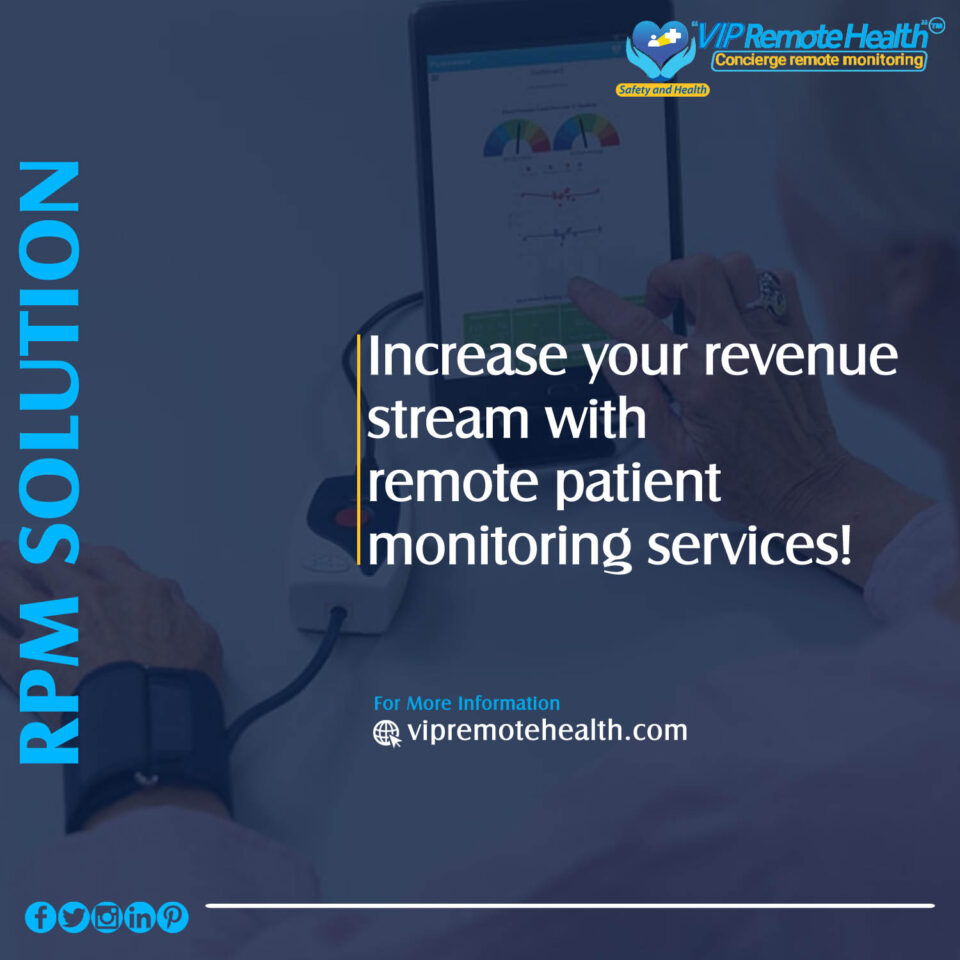RPM stands for remote patient monitoring services and encompasses more than simply fancy activity trackers. It is a method of reducing hospital admissions, lowering healthcare expenses, and improving patient caring & outcomes. Doctors may use RPM to help provide patients greater feedback about their problems and treatment by leveraging data. Furthermore, RPM can be used to boost revenue in outpatient practices.
Patients with severe diseases such as (CHF) congestive heart failure, COPD, diabetes, as well as those who visit the emergency room regularly, can benefit from RPM. The remote patient monitoring devices, on the other hand, are not a substitute for emergency medical care. Patients would still need to call 911 in an emergency because surveillance is not done directly in real-time.
A Remote Patient Monitoring Devices Program’s Components
The majority of medical practices enlist the help of a vendor to provide gadgets and a monitoring platform. Our (CMS) Services now permits some services to be outsourced, allowing clinics to choose between setting up & monitoring patients or exporting all services, such as:
- Device
- Platform for monitoring
- Time for staff to begin initiating patients
- Time for staff to set up patients
- Invoice time for employees
In such a medical practice, starting RPM is a good idea.
It’s time to start working on implementation when you’ve chosen a vendor. Here are some suggestions for making the RPM program a success.
Begin with one supplier who will serve as the “champion” & commit to ironing out the bugs for the remainder of the practice.
- Buy-in From non-physician Providers — It will not be a significant time investment for (MAs) medical assistants and nurses. Still, it may be anything they overlook daily. Ensure that there has been buy-in, which they know the mechanism, and somebody is monitoring the metrics.
- Initial setup – This may be sluggish initially until staff & providers better understand what they’re doing. Provide patients with specific instructions.
- Prepare to teach your patients about the program and have responses available in case they have questions.
- To reduce staff and patients’ annoyance, have patient phone conversations routed to a qualified point person.
- Make sure that patients with problems are aware that they should not contact their doctors late at night.
Make a handout with a FAQ and upload it on the practice website –
Billing & Coding – When you get started, keep in mind your billing staff is up – to – speed & that you get a strategy in place for recording costs. So now, it is very important to maintain the RPM track service fees. If you pay the monitoring tags per month, you only need one technique to check whether it is completed.
So here, the initial setup has to be completed within the same day where the patients do the device set up. So if the codes are used commonly to make RPM devices invoicing, all the devices must be properly familiarised and tested by the employees or suppliers you will work with. Nowadays, the main technology has progressed a lot with physiological parameters. The device also helps measure parameters like blood pressure, pulse oximetry, etc., and other possible factors within thirty days.
How does Technology Function?
Both physicians & patients benefit from mobile remote patient monitoring services, which require low resources to reach a wide population and collect data reliably and efficiently. Push notifications are used in an automatic schedule to remind the person to send in certain data at a time & location that is convenient for them.
After receiving the data, a physician evaluates it and, if necessary, advances to a face-to-face consultation or a phone talk. As a result, portable monitoring seems to be more cost-effective and much more likely to reach patients’ needs than some other communication techniques to meet CMS regulations.
Conclusion
Simply said, RPM is the device that captures patient data & communicates it to a physician through the internet. The information gathered allows a doctor to keep track of changes in a person’s vital signs and take action as needed. On the market, there are numerous different types of gadgets that all monitor distinct vital signs.
Also Read: Key Strategies for Remote Patient Monitoring System
